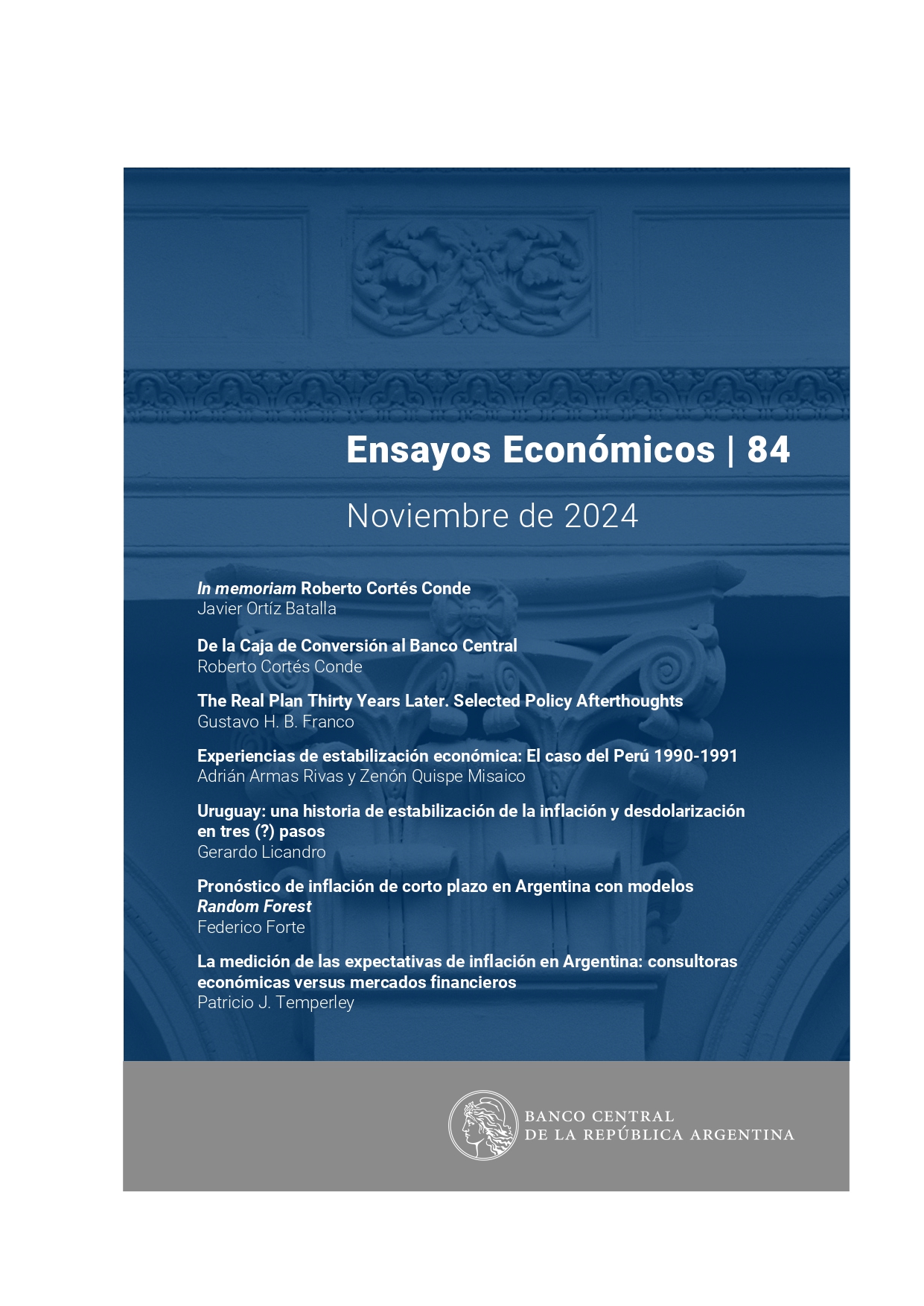Uruguay: A Story of Inflation Stabilization and De-dollarization in Three (?) Steps
Keywords:
Exchange rate bands, Exchange rate, Dollarization, Inflation, Monetary policy, Stabilization plan, UruguayAbstract
This paper analyzes Uruguay's inflation stabilization process, highlighting historical challenges and lessons learned. For decades, the country faced episodes of high inflation, with failed stabilization attempts based on fixed exchange rate regimes that ended in balance of payments crises and monetized fiscal deficits. The stabilization plan implemented in the 1990s marked a turning point, combining a crawling exchange rate band as a nominal anchor, significant fiscal adjustments, and structural reforms in areas such as social security, the financial system, and the public sector. Uruguay achieved low inflation from 1998 onwards, and while the plan culminated in the 2002 crisis, monetary policy remained firmly committed to avoiding inflationary financing of the fiscal deficit—a key factor in preserving the progress on inflation control. Uruguay's experience underscores the importance of strong fiscal anchors, structural reforms, and prudential regulations to stabilize an economy. However, dollarization persists as an economic and cultural challenge, along with the development of local currency markets.
JEL Classification: E31; E50; E65




